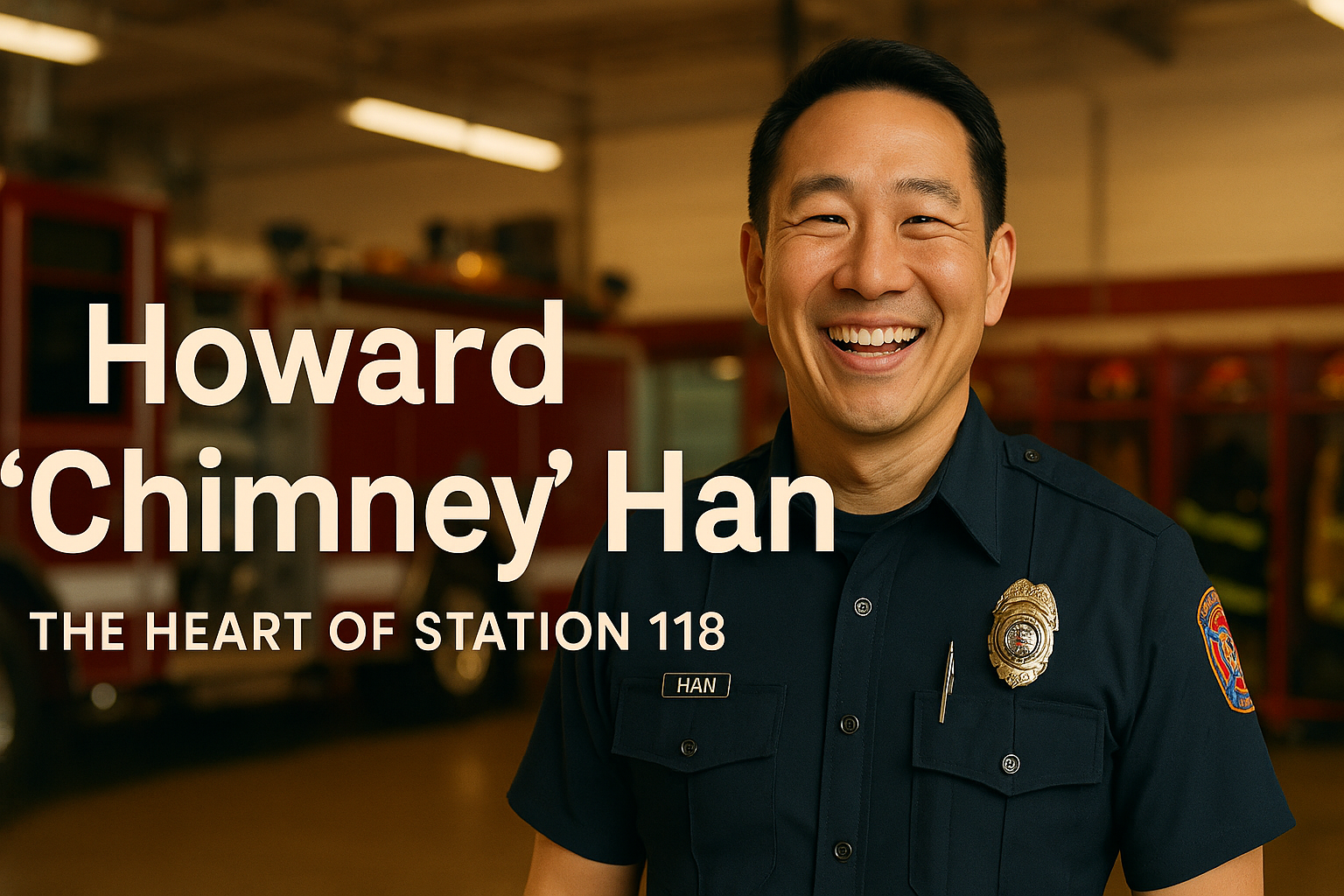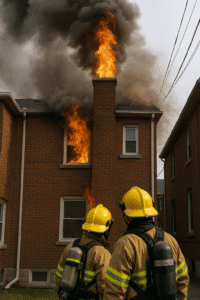Unpacking the Nickname: Why Is Howard Han Called “Chimney” on 9-1-1?
If you’re a fan of the hit Fox-turned-ABC drama *9-1-1*, you know the crew of Station 118 by their first names, their last names, and in one very unique case, a nickname that seems completely out of left field. We’re talking, of course, about Howard Han, the beloved firefighter-paramedic everyone calls “Chimney.”
It’s a question that brings many new viewers to Google: “Why do they call him Chimney?” The name is so distinct and seemingly random that it begs for an explanation. It doesn’t fit the typical firefighter nickname mold like “Cap” or “Probie.” It’s quirky, it’s memorable, and as it turns out, it’s tied to a story of bad luck, perseverance, and a moment that defined his entry into the world of firefighting.
In this deep dive, we’ll explore the exact origin of Chimney’s iconic nickname, analyze the character’s incredible journey of survival, and even look at the real-world culture of nicknames among first responders. Let’s get into it!

The Origin Story: A Stroke of (Bad) Luck
The secret to the name isn’t buried in seasons of complex lore. It was revealed in the Season 2 episode, “Chimney Begins.” This powerful episode dives into Howard Han’s backstory, showing his journey to becoming a firefighter and, crucially, how he got the name that would stick with him for his entire career.
During his time at the fire academy, a training exercise went spectacularly wrong for the young recruit. The drill involved a simulated fire in a building. In a moment of sheer bad luck, another firefighter lost control of a charged fire hose, which whipped around and blasted Howard. The force of the water sent him flying across the room, where he ended up getting stuck head-first in a chimney.
It was one of those classic “you had to be there” moments that was simultaneously terrifying and, in retrospect, darkly hilarious. His fellow recruits and instructors had to pull him out. From that day forward, the name “Chimney” was born.
What started as a teasing hazing nickname, a reminder of his embarrassing and unlucky incident, eventually became a term of endearment. Howard embraced it, and it became his identity within the firehouse. It’s a perfect example of how a moment of vulnerability can be transformed into a badge of honor.
More Than a Name: Chimney’s Unbreakable Spirit
The nickname “Chimney” has become ironically fitting over the course of the show, as the character has survived an unbelievable amount of trauma and hardship—much like a real chimney withstands fire, smoke, and storms.
Let’s recap some of Chimney’s near-death experiences:
- The Rebar Incident (Season 1): In one of the show’s most shocking moments, a car accident sends a piece of rebar straight through Chimney’s skull. He miraculously survives after complex brain surgery.
- The Stabbing (Season 2): He is brutally stabbed and left for dead by the abusive ex-husband of his girlfriend, Maddie. Again, he pulls through against all odds.
- The Warehouse Fire (Season 4): He’s caught in a dangerous fire and suffers from smoke inhalation and dehydration.
His resilience is legendary among fans and characters alike. The name “Chimney,” born from an accident, now symbolizes his incredible ability to endure. A real chimney needs solid construction to last, with every brick held together by the best mortar for chimney work; similarly, Howard Han is held together by an unbreakable will to live and protect those he loves. His survival isn’t just a plot device; it’s central to his character’s identity.
This level of wear and tear, both physical and emotional, brings up a crucial real-world question: what happens when the “chimney” of your own home starts to crack? Knowing if homeowners insurance covers chimney repair is vital for any homeowner, as unexpected damage can be a huge financial burden.

Fan Essential: Adventure Medical Kits Trauma Pak
Be prepared like a first responder. While you might not face Chimney’s level of danger, having a comprehensive trauma kit with QuikClot in your car or home is a smart move for any emergency. It’s a practical piece of gear inspired by the show’s heroes.
Check Price on AmazonThe Culture of Nicknames in Emergency Services
The concept of a quirky, story-based nickname is deeply rooted in the real-world culture of firefighters, police, and paramedics. These are high-stress jobs where camaraderie and trust are essential for survival. Nicknames serve several important functions:
- Building Bonds: A shared nickname, often born from a shared experience (like getting stuck in a chimney), creates an instant bond and a sense of belonging. It’s an inside joke that solidifies the team.
- Easing Tension: Humor is a critical coping mechanism in jobs where personnel witness trauma daily. A funny nickname can lighten the mood and make the unbearable a little more bearable.
- Efficiency in Communication: In a chaotic emergency scene, shouting a unique, single-word nickname like “Chimney!” is often faster and clearer than yelling “Howard!” or “Han!”.
These nicknames often come from a memorable mistake, a physical attribute, or a heroic act. Just like Chimney, many real first responders carry a name that tells a story. This attention to detail is one of the things that makes *9-1-1* feel so authentic to viewers and professionals alike.
The everyday calls these teams face aren’t always life-or-death dramas. Sometimes it’s about helping citizens with more unusual problems. For instance, knowing how to get a raccoon out of a chimney is a real skill, and it’s not uncommon for fire departments to get calls about animal rescues. While Station 118 deals with earthquakes and tsunamis, your local firehouse might be figuring out what to do about a bird, and wondering how long for a bird stuck in a chimney to die before it becomes a bigger issue.
Chimney Maintenance: A Metaphor for Self-Care
A chimney is a structure that requires constant upkeep to function safely. If you neglect it, creosote builds up, bricks can crack, and it can become a fire hazard. Chimney’s personal journey on the show is a powerful metaphor for this.
After each traumatic event, he has to go through a period of physical and emotional recovery. He has to “clean out the flue” and “repair the cracks” in his own life, often with the help of his found family at Station 118. It’s a reminder that resilience isn’t just about surviving; it’s about the hard work of healing afterward.
Just as a homeowner needs the best chimney sweep vacuum to maintain their fireplace, Chimney relies on his support system to clear away the emotional debris left by his experiences. And just as you might need to check your roof for a solid place to install equipment using the best chimney antenna mount, he has to ensure his own foundations are secure before he can help others.

For the Fans: Firefighter Funko Pop!
Show your appreciation for the heroes of Station 118 and real-life firefighters everywhere with a collectible vinyl figure. It’s a perfect desk accessory for any fan of the show, celebrating the bravery and spirit of first responders.
Check Price on AmazonUltimately, Chimney isn’t just the comic relief or the guy who gets hurt a lot. He’s the heart of the show for many fans—a testament to the idea that no matter how many times you get knocked down (or stuck in a chimney), you can always get back up. He proves that the only visitor who should be coming down the chimney is Santa Claus—though we all know there are clever ways to handle that if you’re wondering how does Santa get in without a chimney.
Frequently Asked Questions (FAQ)
What is Chimney’s real name on 9-1-1?
His real name is Howard Han. He is played by the actor Kenneth Choi.
What episode reveals Chimney’s backstory?
His origin story, including how he got his nickname, is fully explained in Season 2, Episode 12, titled “Chimney Begins.” It is widely considered one of the best episodes of the series.
Is “Chimney” a realistic nickname for a firefighter?
Yes! While the specific situation is comical, the culture of giving nicknames based on embarrassing or memorable moments is very realistic in firehouses and other emergency services professions.
Who is Chimney in a relationship with on the show?
Chimney’s primary romantic relationship throughout the series is with Maddie Buckley (played by Jennifer Love Hewitt), a 9-1-1 dispatcher and the sister of his fellow firefighter, Evan “Buck” Buckley.
